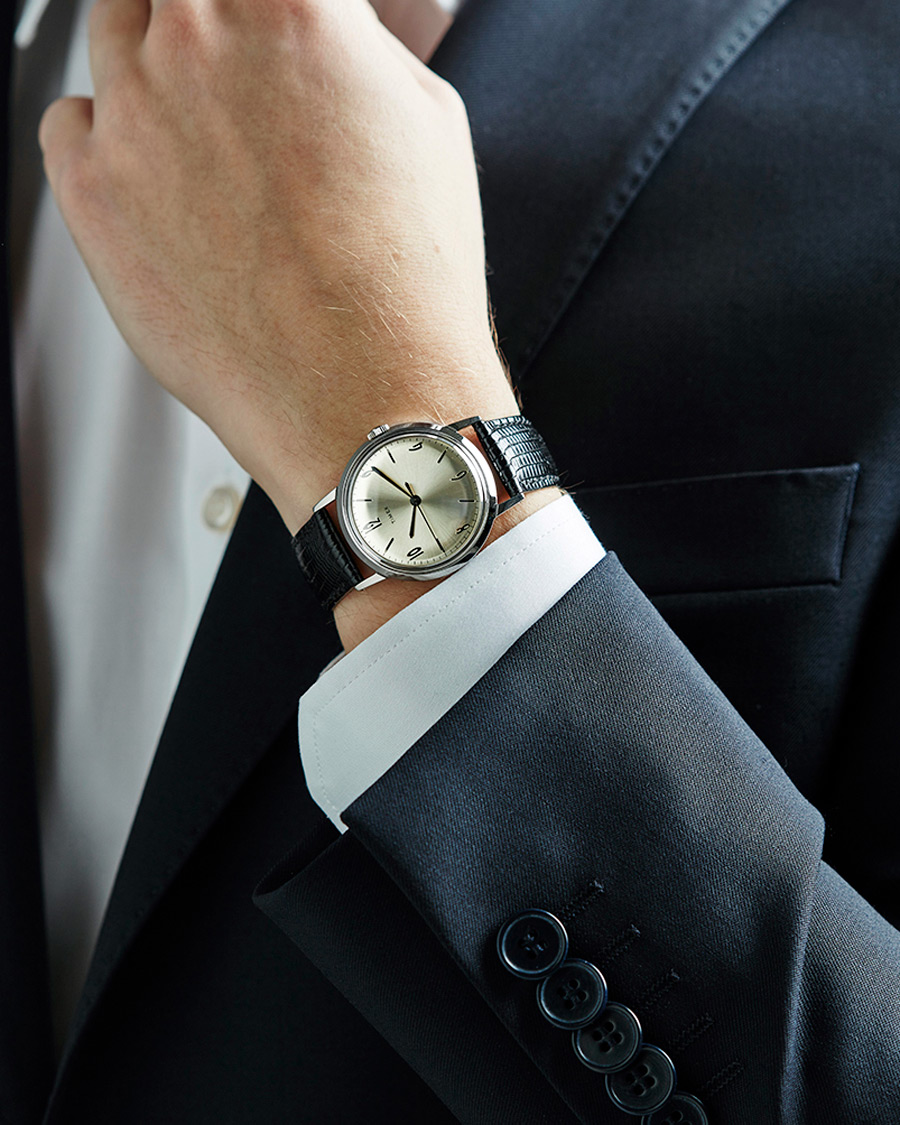
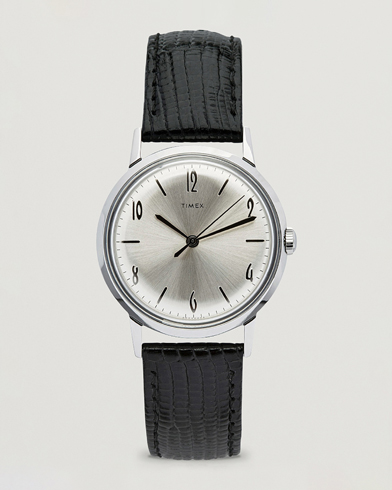
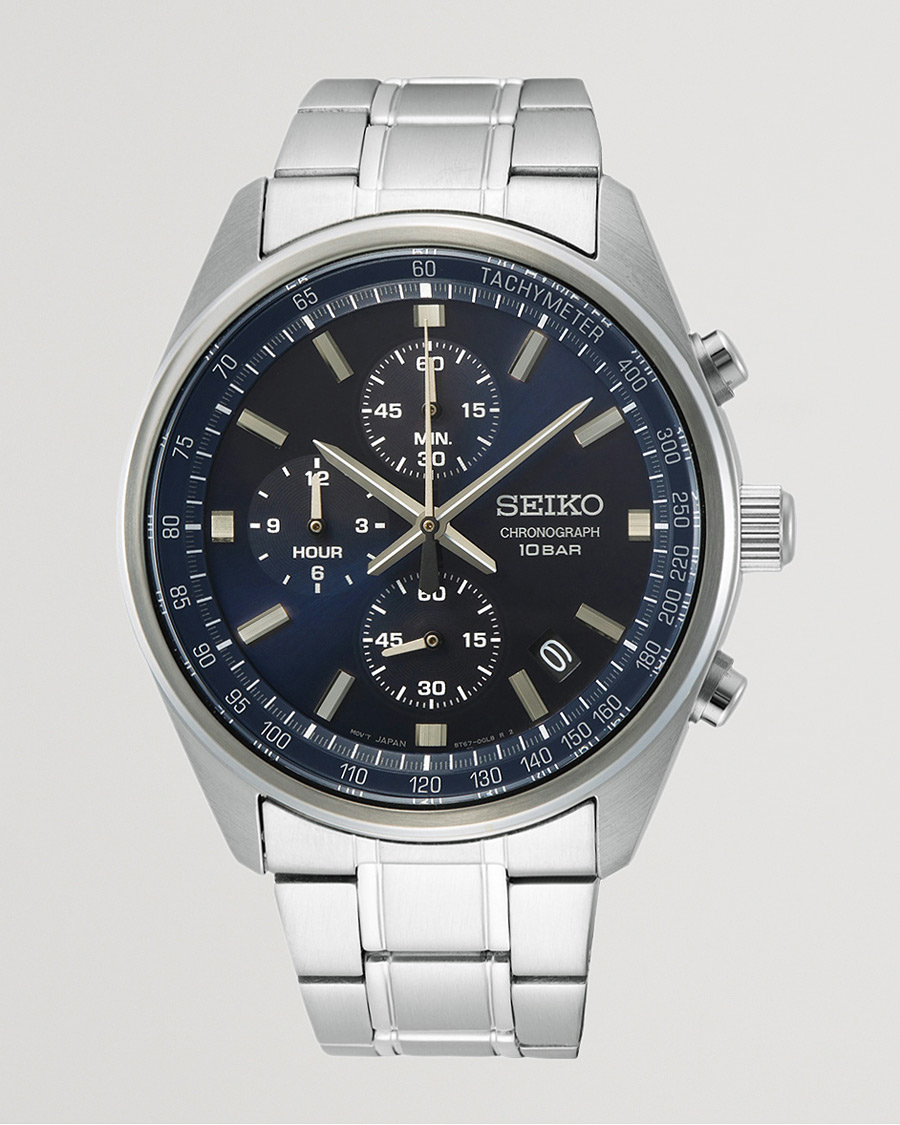
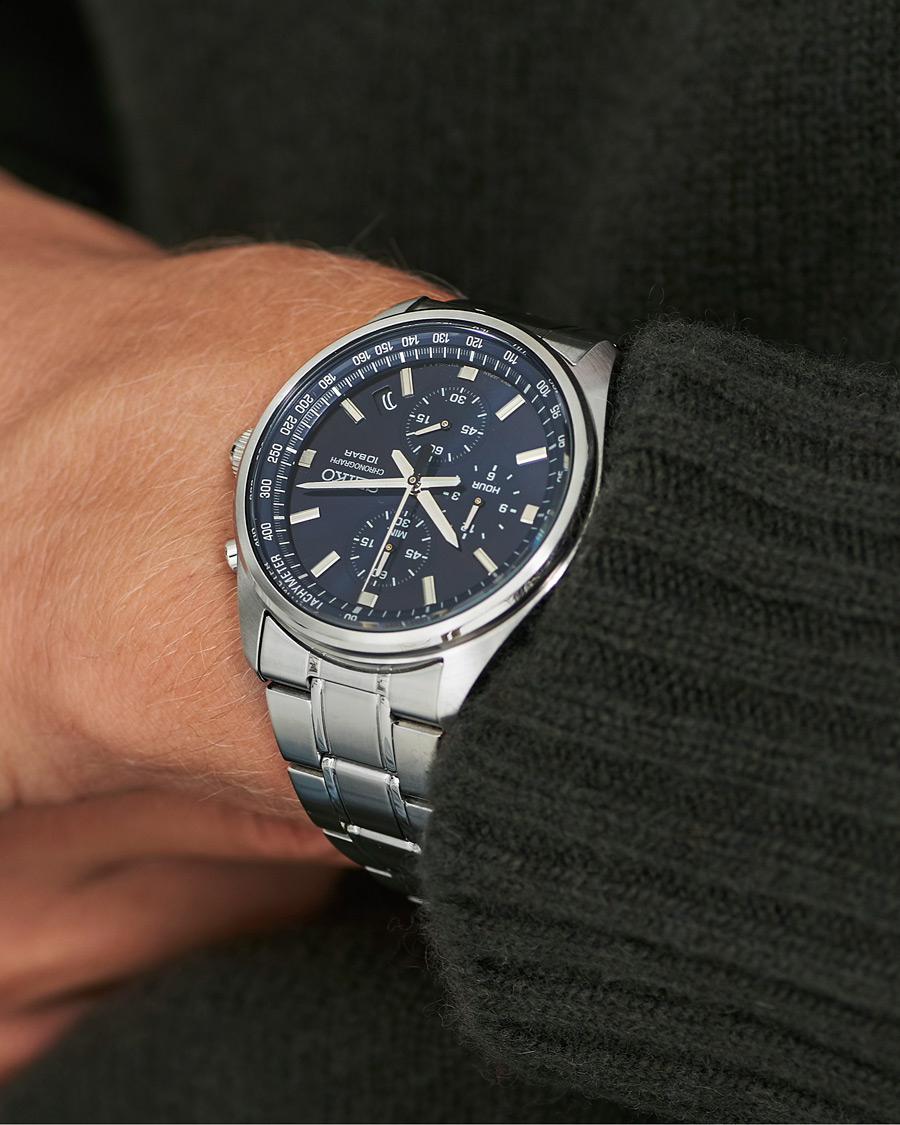
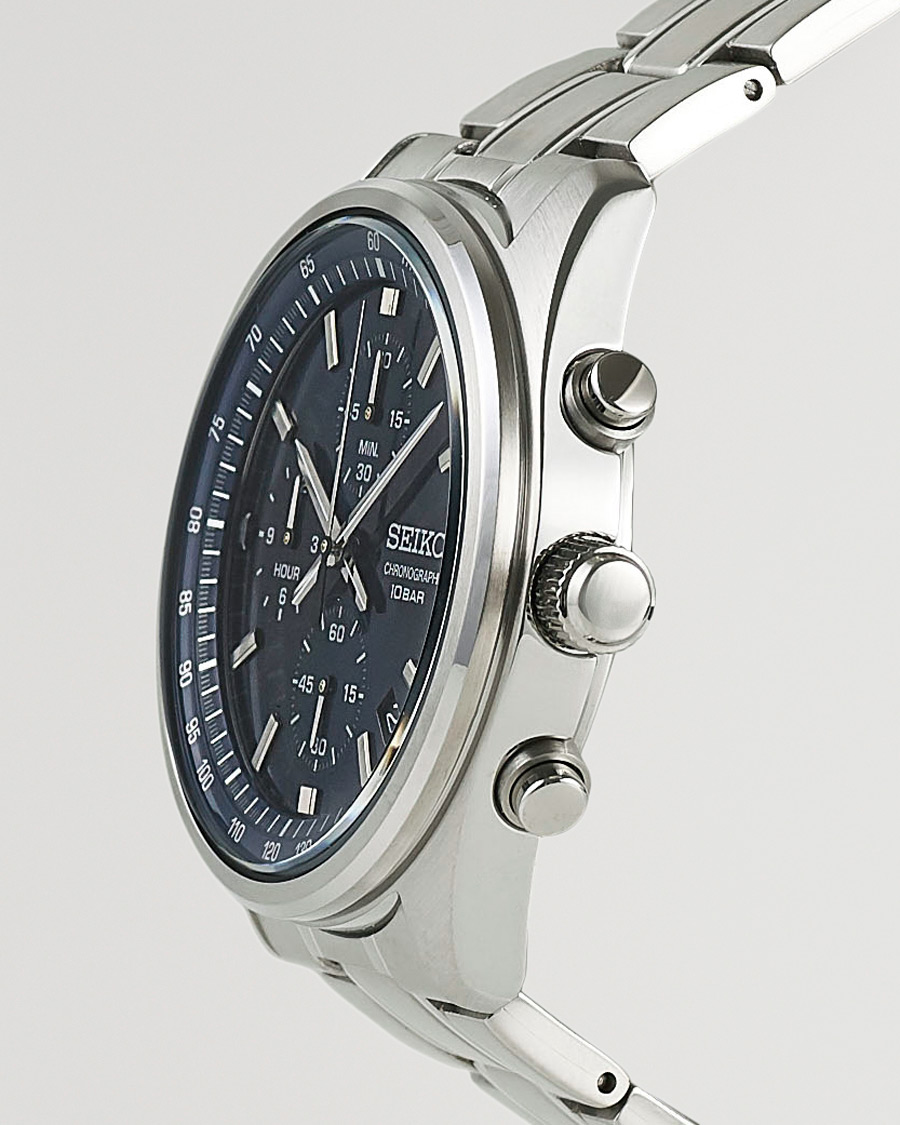

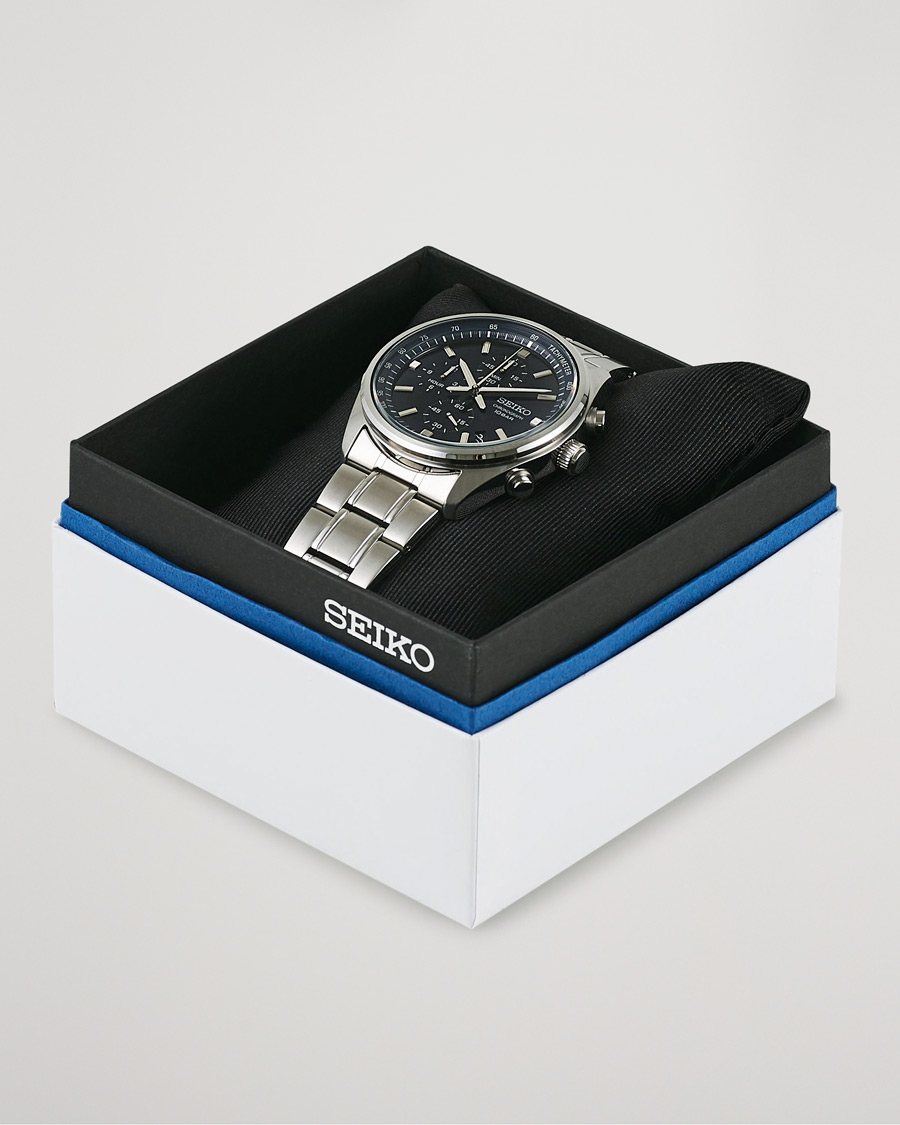
• Stainless steel wristwatch.
• Complications: Chronograph, second indicator, calendar and tachometer.
• Seiko's scratchproof Hardlex watch crystal.
• Chronograph displaying 1/5 of a second.
• All components are produced by Seiko themselves.
• Presented in an exclusive watch box, together with a certificate of authenticity and warranty card.
Specifications:Model: Seiko Chronograph SSC773P1Diameter: 42mmStrap width: 20mmMovement: Quartz Cal. 8T67Watch case: Stainless steelCase back: Engraved steelBezel: Polished stainless steel with tachometerWatch face: Blue with silver-coloured LumiBrite hands and indexesCrystal: Hardlex mineral glassStrap: Stainless steelVattentålighet: 10 ATMCalendar: YesChronograph: Yes
For over a century, Japanese company Seiko as been at the forefront of timepiece production. On countless occasions, the brand’s signature combination of function and innovation have revolutionised the art of watchmaking. Particularly notable are the introduction of the world’s first quartz watch in 1969 and 1982’s rather unique “TV watch”.
The company’s roots can be traced all the way back to 1881, when, at the young age of 21, Kintaro Hattori got his start selling and repairing watches in central Tokyo. After several years in the business, he decided to begin producing watches in his own workshop, laying the foundations for what was to become an internationally renowned name in watchmaking.
For over a century, Japanese company Seiko as been at the forefront of timepiece production. On countless occasions, the brand’s signature combination of function and innovation have revolutionised the art of watchmaking. Particularly notable are the introduction of the world’s first quartz watch in 1969 and 1982’s rather unique “TV watch”.
The company’s roots can be traced all the way back to 1881, when, at the young age of 21, Kintaro Hattori got his start selling and repairing watches in central Tokyo. After several years in the business, he decided to begin producing watches in his own workshop, laying the foundations for what was to become an internationally renowned name in watchmaking.
+46 (0)10-707 95 80
Mon-Fri 08:00-17:00 CET/CEST. International rates apply.
Please check with your operator before calling or, alternatively, contact us via e-mail at the below address.
contact@careofcarl.com
We aim to reply to your email within one working day.
Contact details for specific departments can be found here.
Answers to the most frequently asked questions can be found here.
What regions do you deliver to?
Care of Carl offers EU-wide delivery.
For destinations in Scandinavia, Germany, Austria, Switzerland, Netherlands, France and Spain we recommend using our local sites which can be found at the following addresses:
| Sweden | careofcarl.se |
| Norway: | careofcarl.no |
| Denmark: | careofcarl.dk |
| Finland: | careofcarl.fi |
| Germany: | careofcarl.de |
| Austria: | careofcarl.at |
| Switzerland: | careofcarl.ch |
| Netherlands: | careofcarl.nl |
| France: | careofcarl.fr |
| Spain: | careofcarl.es |











